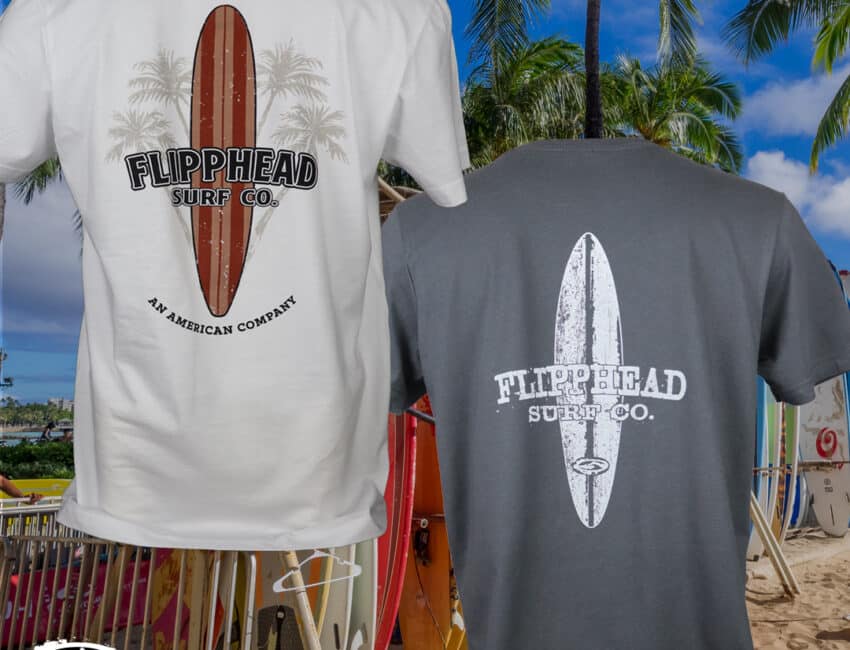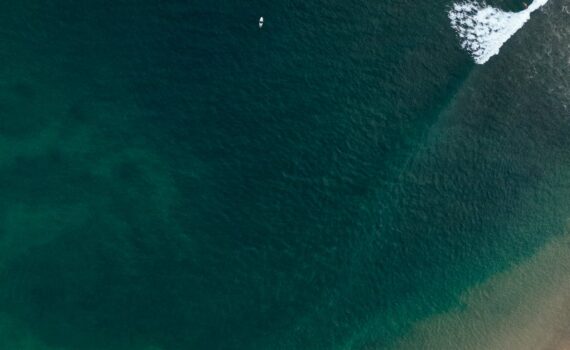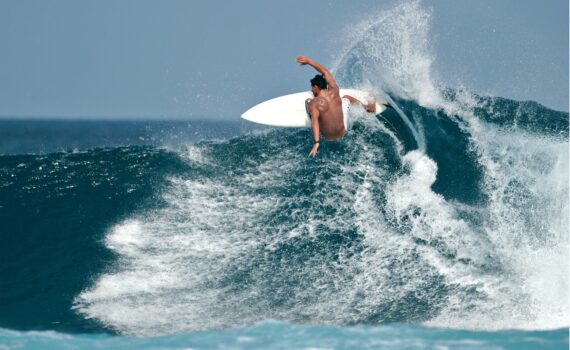The market now features 61 different surf t-shirt styles, with prices ranging from $26.95 for classic designs to $41.95 for premium men’s options. These shirts are accessible to more people than ever before. The size range has expanded beyond simple S through XXL to include sizes up to 5X.
Surf t-shirt styles have changed by a lot since Jack’s Surfboards opened in 1957. Modern designs combine vintage appeal with fresh innovations. Retro surf shirts have gained popularity and typically cost around 179.00 lei. The color selection has become impressive. Shoppers can choose from 80 black varieties, 39 blue options, and 62 gray styles.
The sort of thing I love about surf t-shirts spans their entire experience – from their simple beginnings to the trends that will shape collections in 2025. This detailed piece covers it all.
The Birth of Surf T-Shirts: 1950s-1970s Origins
The surf t-shirt’s beginnings trace back to the post-war era as surfing subculture took shape along California and Hawaii’s sun-drenched coasts. Plain functional beachwear transformed into a powerful identity symbol for this emerging movement throughout the 1950s.
Early surf culture and first branded tees
A defining moment for surf t-shirts arrived in 1961. Floyd Smith of Surfboards by Gordon and Smith invited local surfers to his San Diego shop with their plain white tees. He screenprinted the company’s now-familiar logo on the back at no cost. This simple marketing move sparked what would become the sport’s lasting impact on fashion.
Surfers in the 1950s wore plain white t-shirts with drawstring “surf trunks”. The culture gained momentum and competition team surf shirts featuring names like Weber, Hobie, Jacobs, Greg Noll, and Velzy became popular.
The classic surf t-shirt design became 1960s standard – a large logo on the back and a smaller graphic over the left chest. Several major brands emerged that would shape surf fashion for decades:
- O’Neill, started in 1952 by Jack O’Neill, creator of the first modern wetsuit
- Rip Curl, born in 1969 in Torquay, Australia
- Billabong, which launched in 1973 with revolutionary triple-stitch board shorts
Hawaiian influences on design
Hawaiian esthetics deeply influenced early surf shirt designs and created a visual style that remains central to surf fashion. The aloha shirt appeared in Hawaii during the 1920s or 1930s and gained popularity after World War II when service members brought these vibrant garments to the mainland.
Three-time Olympic swimming champion and surfing pioneer Duke Kahanamoku accelerated this cultural exchange by endorsing specific brands. Movies like “Gidget” and Elvis Presley’s “Blue Hawaii” strengthened the connection between surfing and Hawaiian-inspired fashion.
Alfred Shaheen expanded his family’s garment business in 1948 and played a crucial role. He created designs celebrating Hawaii’s history and culture, along with South Pacific and Asian influences. These patterns, which featured traditional Hawaiian motifs, tropical flora, and cultural symbols, became surf t-shirt’s defining elements.
The rise of iconic surf logos
Surf t-shirt culture boomed with distinctive logos that symbolized authenticity and aspiration. Hobie’s diamond-shaped emblem from the 1950s set logo standards and drew enthusiasts to its California stores for over seven decades.
The most recognizable design came in 1972 when Gerry Lopez and Jack Shipley created the Lightning Bolt logo. North Shore surfers quickly adopted it as their standard equipment graphic. This design created worldwide excitement and boosted interest in branded surfboards and apparel.
The late 1960s and early 1970s saw these iconic logos evolve from simple brand markers into cultural symbols. Brands thrived on selling stickers, patches, and t-shirts in California surf shops even after production stopped. This niche beach culture had secured its place in mainstream fashion by the late 1970s.
Golden Era: 1980s-1990s Retro Surf Shirts Revolution
The 1980s brought a dramatic shift in surf fashion that turned simple beach clothes into must-have style pieces. Wave riders’ functional wear grew into a cultural movement that would change global fashion forever.
Neon explosion and bold graphics
Surf t-shirts of the 80s and 90s left subtlety behind. These shirts burst with neon colors – fluorescent pinks, electric greens, and blazing oranges stood out against black backgrounds as the decade’s signature look. Brands adopted psychedelic takes on ocean imagery. The iconic “Electric Wave” design captured this bold spirit perfectly.
Colors weren’t the only thing changing. All-over prints, textured graphics, and eye-catching logo placements turned men’s surf t-shirts into wearable art. Ocean Pacific created what might be the most recognizable vintage surf shirt ever – their sunset gradient tee with its horizon-inspired colors that surf enthusiasts know anywhere.
The style’s key elements included:
- Neon colors that popped against black backgrounds
- Psychedelic wave and surf imagery
- Bold, oversized logos and all-over prints
Surf brands that defined the era
This golden age saw surf brands become household names. Quiksilver grew beyond its Australian roots after changing surf wear with Velcro-fastened boardshorts. The brand saw massive growth through the 80s and 90s. Billabong, which started in 1973, expanded from its Gold Coast beginnings to become a market leader. The company varied its products and opened 700 stores in 100 countries by 2011.
Rip Curl built on its 1969 foundation to become Australia’s most iconic surf brand. Vision Street Wear caught eyes with bright colors and bold graphics that appealed to surfers, skateboarders, and BMX riders. Other brands like Maui, Ocean Pacific (OP), Body Glove, and Reef helped create the era’s unique style.
How surf shirts entered mainstream fashion
Surf fashion surpassed its beachwear roots by the mid-1980s. People wore surf brand clothing everywhere, not just near beaches. Professional surfers and celebrities helped boost brand visibility through high-profile endorsements.
Surf brands made smart moves to expand their product lines. They added casual hoodies and accessories that made the lifestyle available to non-surfers. The relaxed style appealed to the broader culture, and surf shirts made their way into cities and onto fashion runways.
Stussy emerged as a pioneer during this time. The brand mixed traditional surf style with hip-hop culture. Skateboarding started influencing surf fashion too, which led to new combinations like sneakers with board shorts instead of flip-flops. This mix of cultures helped surf brands grow into lifestyle brands that appealed to everyone, not just beach lovers.
Evolution of Materials and Fit in Surf Shirts
Surf shirts have come a long way from simple beach attire to high-tech performance wear. The scene has changed completely due to shifting customer needs and breakthroughs in textile technology that have redefined how surfers dress in and out of the water.
From cotton to performance fabrics
The first surf t-shirts were made from 100% cotton—comfortable and easy to breathe in but with clear drawbacks. Cotton felt soft and worked well for sensitive skin, but it soaked up water and took forever to dry, which didn’t work well for long water activities. The shirts would get wrinkled and needed ironing after each wash.
Everything changed when synthetic materials showed up. Polyester turned out to be a game-changer with some amazing qualities:
- Long-lasting and resistant to wrinkles
- Great at wicking away moisture
- Blocks UV rays
- Dries quickly
All the same, polyester by itself wasn’t perfect—it tended to hold onto odors from bacteria. This led to state-of-the-art blends that took the best features from different materials:
Cotton-polyester combinations became a hit. These blends offered cotton’s softness with synthetic material’s performance benefits. The result was light, tough shirts that kept their shape even after many washes.
Bamboo has joined the digital world of surf apparel. This naturally soft, breathable material that works well for sensitive skin offers great UV protection—perfect for surf shirts meant for long days in the sun.
Changes in silhouettes and sizing
Surf shirt shapes have changed just as much. The original rash guards looked like superhero suits—tight and form-fitting. Their main job was simple: stop chafing from surfboard wax and shield you from the elements.
Over time, different fits showed up to match various priorities and activities:
- Performance-fit rash guards: Snug and engineered for serious surfing in tough conditions
- Loose-fit rash guards: Known as “surf shirts” or “surf tees,” these fit like regular t-shirts while keeping their technical perks
This rise reflected what customers needed and helped surf gear appeal to more than just hardcore surfers. Designers started making gender-specific fits as they learned how much proper fit matters for comfort and function in water sports.
Technological innovations in surf apparel
Today’s surf shirt technology goes way beyond simple fabric choices. Better construction methods have become significant in improving performance and comfort. Quality surf gear now uses flat seam construction, which eliminates the chafing you’d get from traditional over-lock seams.
Features that used to be premium extras are now what everyone expects:
- UPF (Ultraviolet Protection Factor) ratings to block harmful sun rays
- Stretch materials like elastane or spandex that can expand up to 600%
- Advanced systems that pull sweat away from your body
Sustainability has become a driving force behind material innovation. Many quality rash guards use recycled PET (plastics) polyester instead of new materials. Some companies take it further by using plant-based bio resins and eco-friendly recyclable parts in their manufacturing.
Advanced materials redefine the limits of what’s possible. Graphene-infused neoprene offers incredible strength and heat control, while Yulex gives us a plant-based option instead of petroleum-derived materials. These improvements boost performance and reduce environmental impact—something environmentally aware customers need more than ever.
Regional Influences on Surf T-Shirt Design
No source text was provided to rewrite.
Modern Surf Shirt Trends for 2025
The surf apparel scene will look quite different by 2025. Environmental concerns, design esthetics, and cultural influences are reshaping the industry. Men’s surf t-shirts have grown from simple beachwear into a sophisticated market where eco-friendly practices meet modern style.
Sustainable and eco-friendly options
Surf fashion now pioneers environmental awareness. Leading brands prove this by adding 100% organic ring-spun cotton to their collections. Surfers love this eco-friendly fabric because it feels great on their skin and leaves a smaller environmental footprint.
Gotcha leads by example with 80% of their collection made from sustainable materials, including organic cotton and recycled polyester. Market experts believe recycled polyester use will double by 2030, showing a clear long-term direction.
New eco-friendly materials are becoming popular:
- Tencel and hemp fabrics deliver great performance while staying green
- ECOVERO cuts CO2 emissions and water use by half
- NetPlus turns old fishing nets into fresh material
Companies have found better ways to make their products. The World Surf League now makes clothes on demand instead of in bulk to cut down on waste. On top of that, some brands plant trees with each purchase, creating more ways to help the environment.
Minimalist designs making a comeback
Bold graphics and bright colors are giving way to simpler styles in men’s surf shirts. The classic white t-shirt with its chest logo has gotten a fresh update. Brands now use an off-white “vintage white” that works better with designs.
Simple surf shirt designs now feature:
- Clean lines and shapes without extra details
- Basic colors like black, white, and soft pastels
- Short, clear messages
- Smart use of empty space to make designs pop
This return to basics means more than just looks—it shows people want real, lasting products. Quality materials and timeless designs help fight against throwaway fashion culture.
Crossover between high fashion and surf culture
Surf style has grown beyond its roots to shape high fashion worldwide. Local surf shops have become global trendsetters over many years.
Big luxury brands love surf culture. Gucci worked with Italian pro surfer Leonardo Fioravanti to create their “Gucci Surf” game. Their 2019 pre-fall collection celebrated waves and surfers with retro flowers and ’60s designs.
Prada jumped in too, along with Raf Simmons and Calvin Klein. They’ve added neoprene tops like rash guards and shoes that look like surf socks. Some might worry about cultural appropriation, but this trend has helped real surf brands like Stüssy and Volcom reach new customers beyond beach towns.
Limited edition collaborations
Special team-ups define surf wear in 2025. The MEO Rip Curl Pro Portugal Collection shows this perfectly—Rip Curl joined forces with the World Surf League to create unique artwork just for this series.
These partnerships create real artistic value. Outerknown worked with artist Bailey Elder, who explores natural and spiritual connections in their collection. URT, a San Diego-based brand known for ocean designs, teamed up with San Diego Legion Rugby to blend surf style with rugby spirit.
People love these collaborations because they’re unique and meaningful. They connect different lifestyle groups—like The Jetty Life’s summer partnership with KONA Big Wave. Customers get authentic style that stands out from mass-produced clothes.
Conclusion – Mens Surf T Shirts
Surf t-shirts represent more than just athletic wear – they’re symbols of cultural expression. These shirts have come a long way from their simple cotton beginnings in the 1950s. Today they showcase innovative fabric technology, smart design, and eco-friendly practices.
The modern surf shirt combines tradition with innovation. Minimalist looks, eco-friendly materials, and high-end fashion partnerships define these versatile garments. Gotcha leads this transformation with collections that are 80% sustainable. Surf companies have formed partnerships with luxury brands to create unique interpretations of beach culture.
Mens Surf t-shirts will definitely grow beyond their practical roots. Eco-friendly materials, thoughtful designs, and authentic partnerships drive this development. These shirts provide quality, style, and conscious consumption options for everyone – whether you ride waves or just enjoy a relaxed surf lifestyle.


